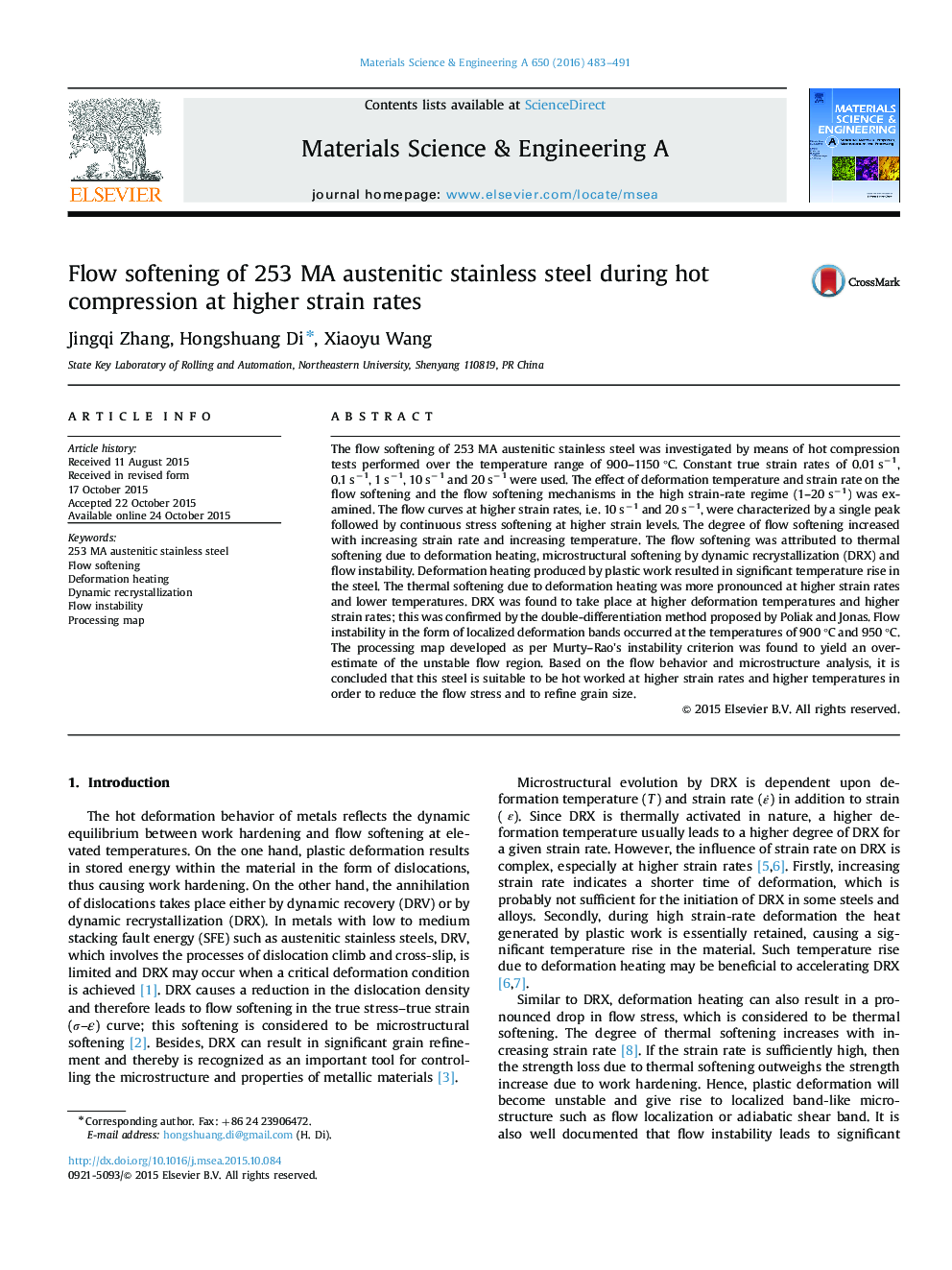| Article ID | Journal | Published Year | Pages | File Type |
|---|---|---|---|---|
| 7976582 | Materials Science and Engineering: A | 2016 | 9 Pages |
Abstract
The flow softening of 253 MA austenitic stainless steel was investigated by means of hot compression tests performed over the temperature range of 900-1150 °C. Constant true strain rates of 0.01 sâ1, 0.1 sâ1, 1 sâ1, 10 sâ1 and 20 sâ1 were used. The effect of deformation temperature and strain rate on the flow softening and the flow softening mechanisms in the high strain-rate regime (1-20 sâ1) was examined. The flow curves at higher strain rates, i.e. 10 sâ1 and 20 sâ1, were characterized by a single peak followed by continuous stress softening at higher strain levels. The degree of flow softening increased with increasing strain rate and increasing temperature. The flow softening was attributed to thermal softening due to deformation heating, microstructural softening by dynamic recrystallization (DRX) and flow instability. Deformation heating produced by plastic work resulted in significant temperature rise in the steel. The thermal softening due to deformation heating was more pronounced at higher strain rates and lower temperatures. DRX was found to take place at higher deformation temperatures and higher strain rates; this was confirmed by the double-differentiation method proposed by Poliak and Jonas. Flow instability in the form of localized deformation bands occurred at the temperatures of 900 °C and 950 °C. The processing map developed as per Murty-Rao's instability criterion was found to yield an overestimate of the unstable flow region. Based on the flow behavior and microstructure analysis, it is concluded that this steel is suitable to be hot worked at higher strain rates and higher temperatures in order to reduce the flow stress and to refine grain size.
Related Topics
Physical Sciences and Engineering
Materials Science
Materials Science (General)
Authors
Jingqi Zhang, Hongshuang Di, Xiaoyu Wang,
